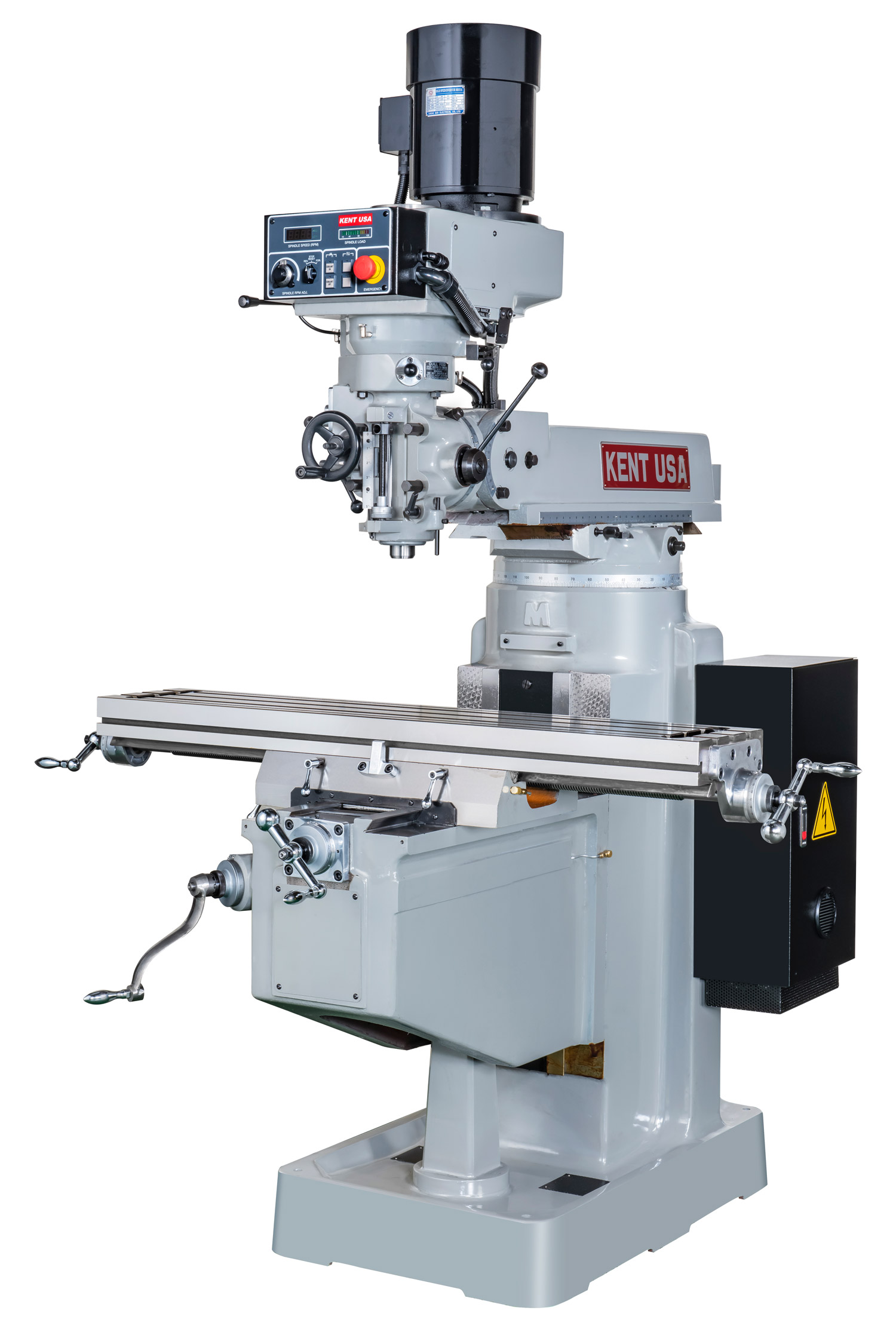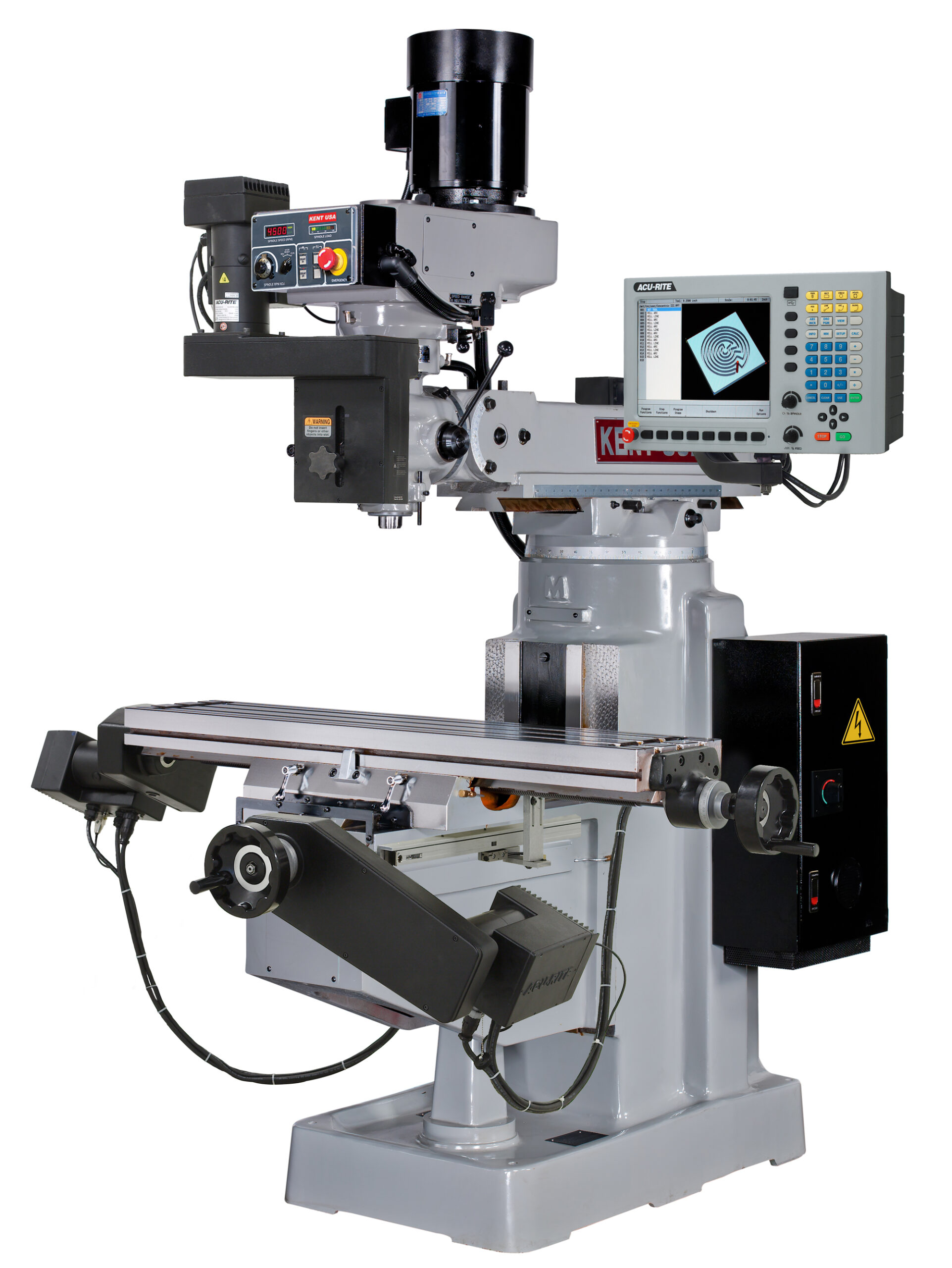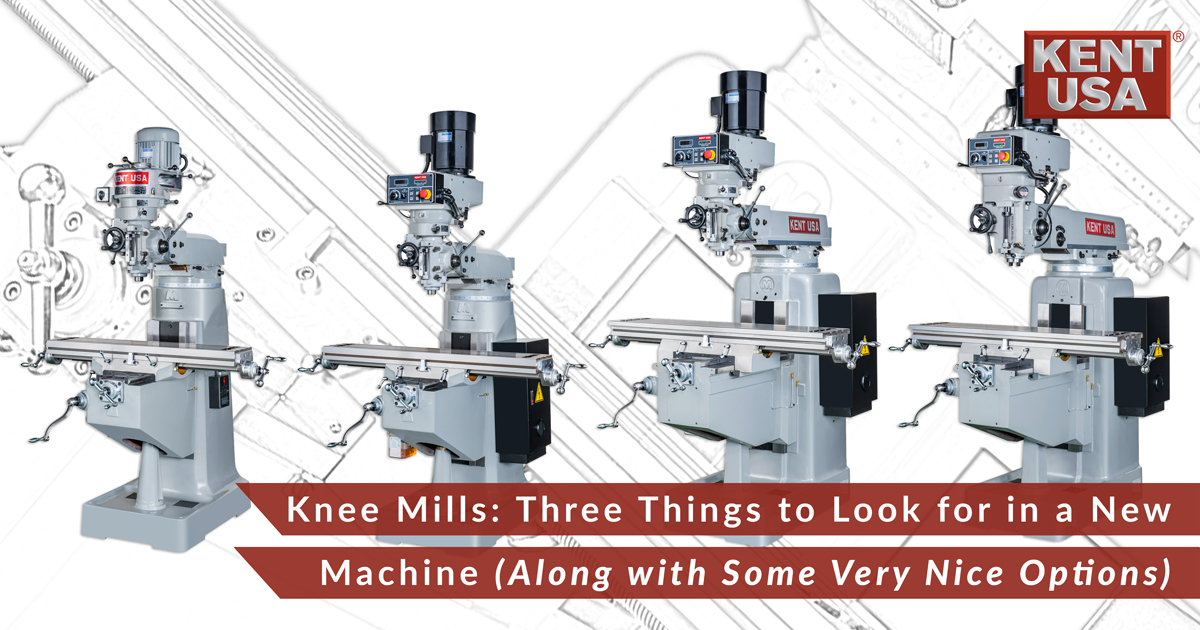Knee mills have been around for nearly nine decades. In fact, the American Precision Museum has one from 1938 on display. And although the company that built that machine is no longer in business, others have taken its place. That’s because its inventor, Rudolph Bannow, hit a home run with his design, and machine builders like Kent Industrial USA have since taken the ball and run with it.
Not all Knee Mills Are the Same
At first glance, all knee mills appear much the same. A tiltable head. A movable ram and turret. A slotted table that can be used to clamp a wide variety of workpieces. A skilled machinist make most anything with a high-quality knee mill. The problem is, looks can be deceiving. Not all knee mills are built the same.
Phasing Out
Let’s start with something basic: power. Since knee mills are often purchased by hobbyists and those just starting out, a good one can run on the single-phase power found in a residential home. Sure, a phase converter will take care of this, but these aren’t without problems. Static phase converters are cheap, but they reduce spindle power. Rotary phase converters are better, but expensive. It’s also just one more thing to maintain. Who needs the hassle when you’re busy making parts?
On the Right Frequency
Here’s another one. Most knee mills use a pulley system to deliver different speed and power ranges. They work quite well if you don’t mind stopping to adjust spindle speeds when you change tools. And if you’re short like me, you might need a ladder to accomplish this. However, most of Kent USA’s knee mills come with an AC-frequency drive. It allows you to go from 0-4500 rpm in under 3 seconds. There’s also an option for a 6000-rpm spindle for those milling lots of aluminum or using small tools.
The Bells and Whistles
There’s plenty more to consider. A digital RPM display is a very nice feature. So is an analog load meter. An automatic lube system avoids the embarrassing (and costly) repairs that come to those who are forgetful about maintenance. Digital readouts, power feeds, and air-powered drawbar are a must. And as with a 6000-rpm spindle, it’s nice to have the option for an NMTB-30 or NMTB-40 spindle, rather than the R-8 found on most knee mills. Lastly, don’t forget about support. Yes, machinists are handy and good at fixing things, but it’s nice to have a reputable machine builder standing behind your investment.
Kent USA KTM-3VKF CNC with AcuRite MillPWR
Check out our other blog about the 6 Things to Consider when Shopping for a Knee Mill.
Share this article:


